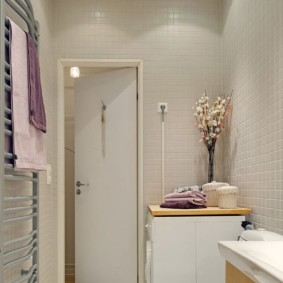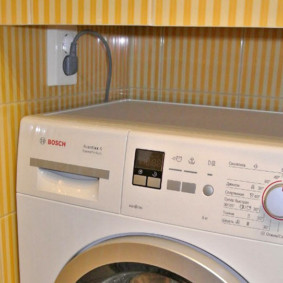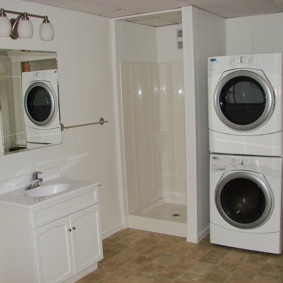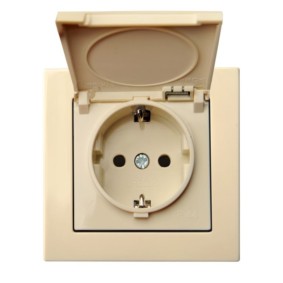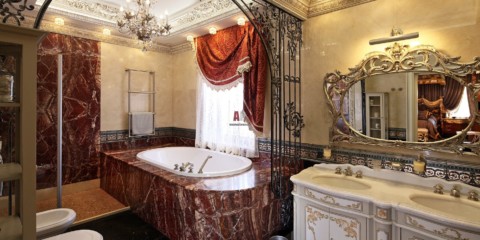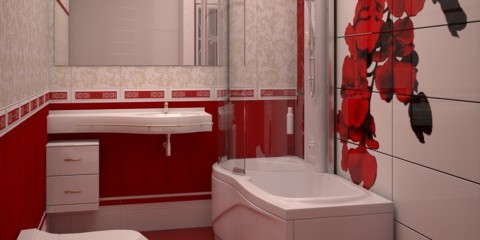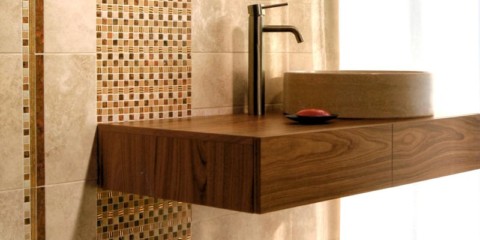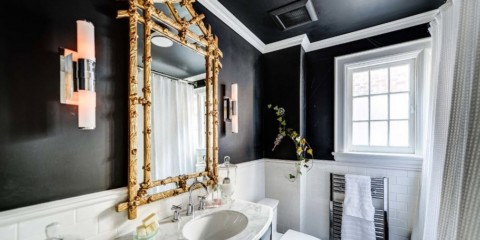 A bathroom
Stylish and versatile bathroom design in black and white
A bathroom
Stylish and versatile bathroom design in black and white
Modern apartments, private houses are sometimes stuffed with appliances from top to bottom, the vast majority of which are connected to the mains. The bathroom is not an exception to the rule - there is no way to do without electricity. The specificity is that this room always retains high humidity. The “correct” outlets in the bathroom are water resistant and are mounted to specific standards.
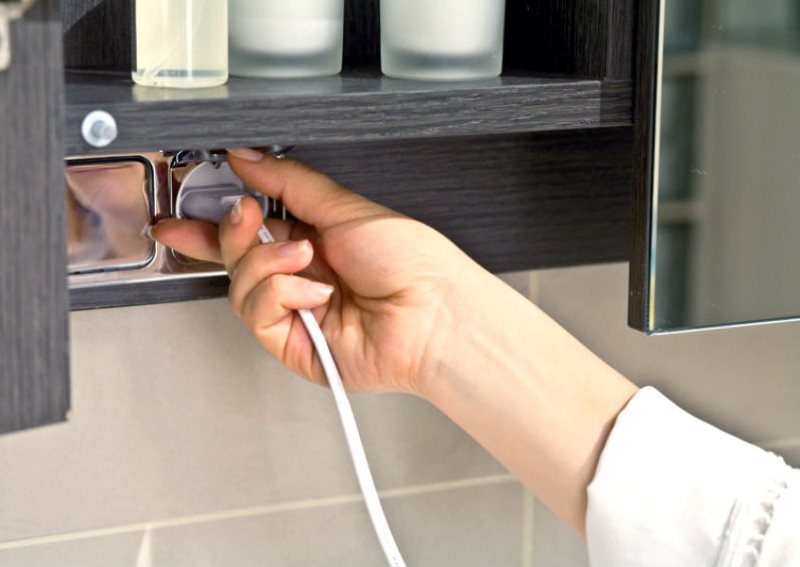
As a rule, in the bathroom there are not many places where you can safely install outlets
Outlets for the bathroom: a necessity or a fad
Content
- Outlets for the bathroom: a necessity or a fad
- Socket in the bathroom: what is it for?
- Where to install the outlet in the bathroom: about the zones, their sizes
- Moisture protection: what type of outlet can be used
- Grounding
- Conclusion
- Video: clearly about the regulatory requirements for installing outlets in the bathroom
In a combined or separate bathroom, a person often has to use all kinds of electrical appliances, such as:
- Washer;
- hair dryer;
- hair curlers;
- electric shaver;
- mirror lighting;
- shower stall details;
- hydromassage system.
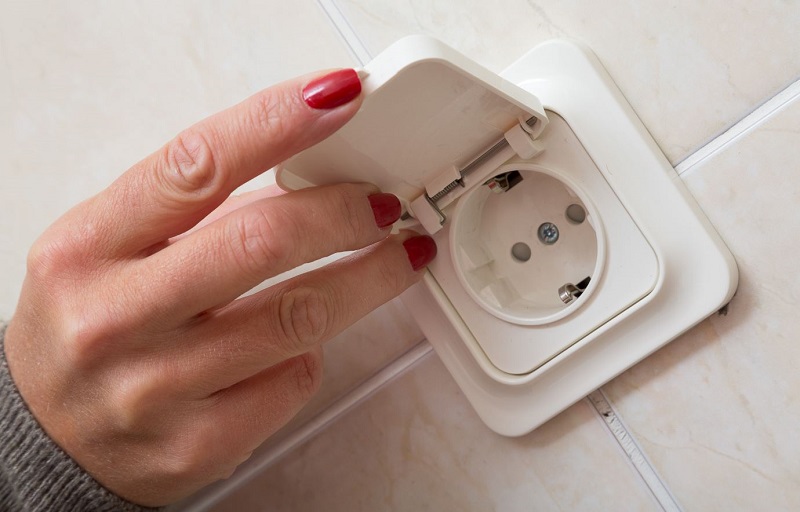
Given the number of appliances powered by the mains, a block of outlets or several separate points are installed in the bathroom
When asked how many outlets are needed in the bathroom, experts say that this directly depends on the number of electrical appliances, the total area of the room. In a spacious, clearly zoned room, it is important to consider that the washing machine is located in one corner, and the dressing table with a mirror, near which the hair will be dried with a hairdryer, and shaving with an electric machine, in the other. If you put just one point, you will have to "pull" a lot of wires to it, which is extremely inconvenient. When there are many places to connect to the mains, it is better to install double or triple sets.
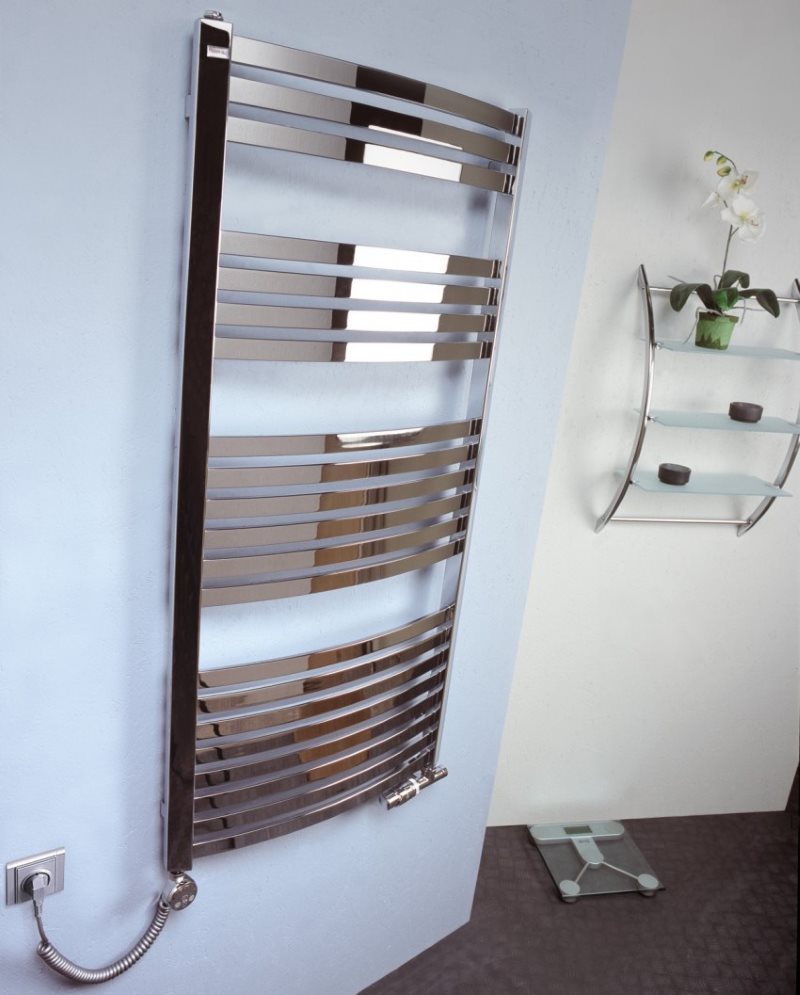
It is recommended to allocate separate sockets for connecting heated towel rails, storage boilers, instantaneous water heaters and other devices that usually work in constant mode
Socket in the bathroom: what is it for?
When choosing exactly how many sockets, switches you need in the bathroom, the number of apartment residents and their needs are taken into account. To shave quickly and efficiently, people use an electric razor that plugs into the power grid. Many expensive models of showers also require connection, not to mention the washing machine that is available in almost every home. A variety of devices for drying, styling, curling, hair straightening, also requires electricity to work.

If you plan to place the washing machine in the bathroom, you will need a separate outlet to connect it
Better an arbitrarily large number of outlets with the correct placement than one extension cord with a bunch of wires stretched in the most unsuccessful places.
Where to install the outlet in the bathroom: about the zones, their sizes
In the bathroom, only mounting outlets equipped with special covers is permissible, but with the plug plugged into the connector, the protection is reduced, therefore even such a device can not be installed everywhere.
For convenience, the room is divided into zones - 0, 1, 2, 3.

Electrical safety zones in the bathroom
- Zone No. 0 - the inside of the shower, sink, bath. It is forbidden to mount any electrical appliances having a voltage of 220V. Only moisture proof with a working voltage of up to 12V are allowed.
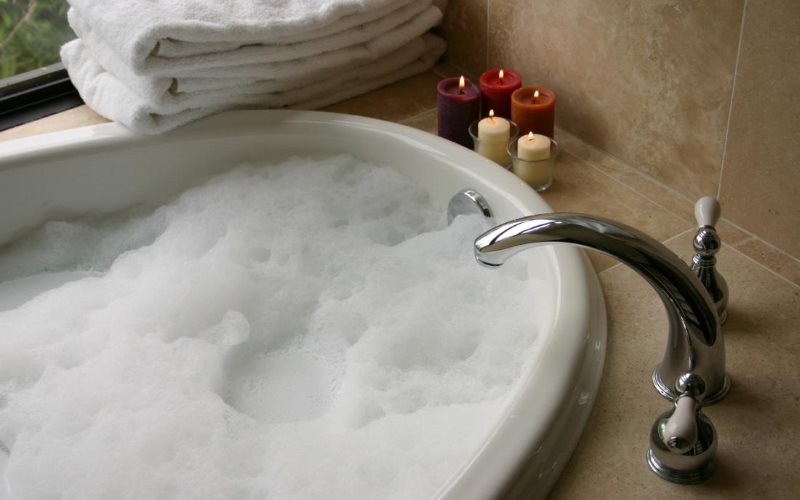
Bowl bath or shower tray - the most dangerous areas for the use of household appliances
- Zone No. 1 - a place near the sink, under it, above the bathtub, etc.Electrical equipment with IPX5 protection, such as water heaters, is allowed, but sockets are also prohibited.
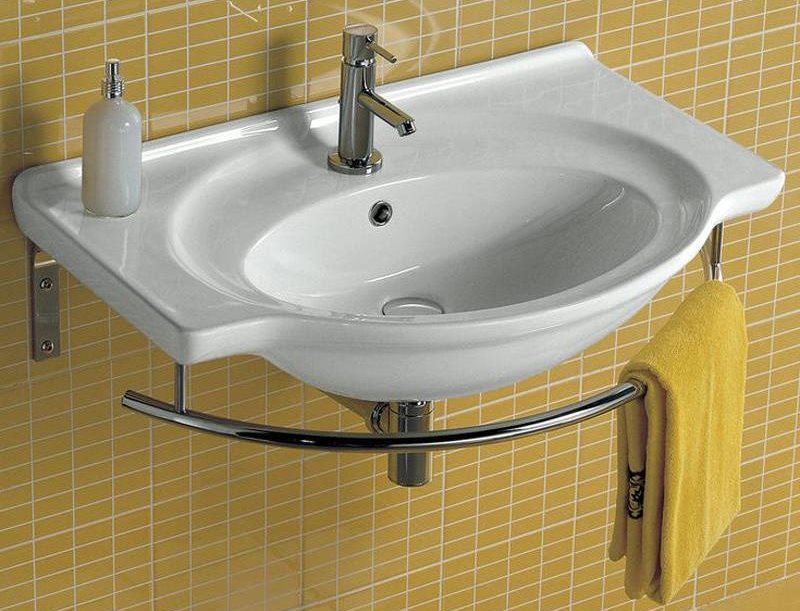
No sockets of any type are allowed near the sink.
- Zone No. 2 - a space located 60 cm or more from the previous zone. Switches, sockets, junction boxes are unacceptable here, but it is allowed to install lamps that are turned on from the cord, hoods, water heaters. To conduct current to all these electrical appliances, an integral long cable is pulled from the shield in the hallway, on the landing, etc.

Lamps near the mirror should be suspended no closer than 60 cm from the surface of the sink
- Zone No. 3 - a place starting where the second zone ends, that is, 240 cm from it. In tight spaces the third zone is absent, therefore, the installation of the outlet will have to be abandoned, in favor of the external one, placed 60-70 cm from the door frame. According to "Soviet" standards, the length of the wire from the washing machine was made at least 2.8 m. Therefore, there were no difficulties with connecting in the corridor.

It is worth noting that such outlets should be equipped with grounding
It is important to note that the rules of the zones are valid only up to a height of 2.2 m from the floor surface.
Moisture protection: what type of outlet can be used
The appearance and location of the connection points is regulated by the relevant requirements of GOST, as well as the PUE (electrical installation rules). All products are marked with the letter code of the international quality standard - IP and two-digit numbers from 0 to 8. The first number is most often absent - dust-tight does not play such a significant role as the ability to resist moisture.
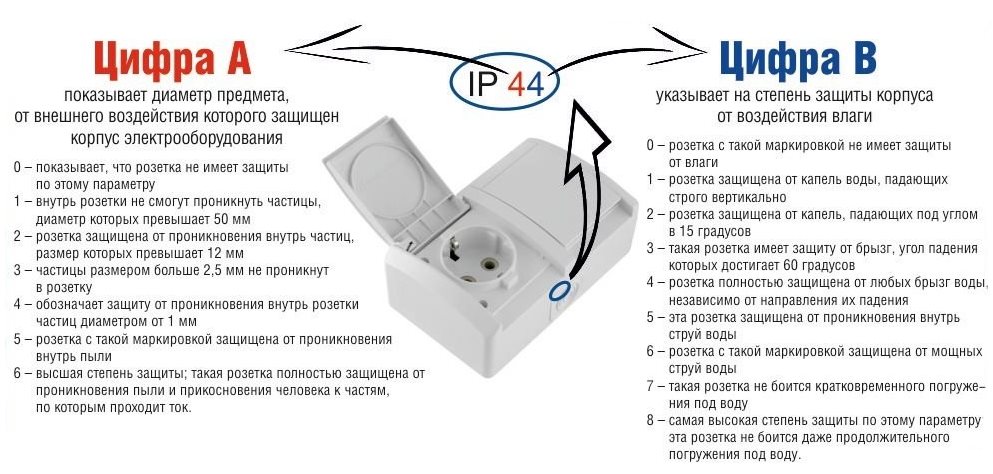
Using this table, you can select the desired outlet parameters
If the device has a figure of eight, it is intended for a device that can be immersed for a meter or more under water. Zero is the least protected option. In bathrooms, it is allowed to use sockets of the IP4 category, which perfectly resists splashes, drops of water from any side. Typically, a structure is provided with a spring-loaded (hermetically self-closing) cap.

Experts recommend sockets marked with both parameters at least 4, but better 5 or 6

During the selection and purchase process, as well as after installing the outlet, it will not be out of place to make sure that it is working - there should be no cracks on the case, the lid should fit snugly and open with a little effort
Installation of connection points in the bathroom is done after finishing walls. Mount a built-in, surface-mounted design or use protective covers. Power cables must be extended in advance.
Grounding
A properly connected bath outlet requires reliable grounding so that the likelihood of electric shock is unlikely. The most important requirement is the use of an RCD machine that provides a "protective shutdown" of electricity if there are threats to human life, such as:
- touching live parts;
- leaks on the case itself;
- short circuit.
The main parameter of the choice of the machine is the leakage current indicators indicated on the case. The recommended trip value of the RCD is 10-30 mA.
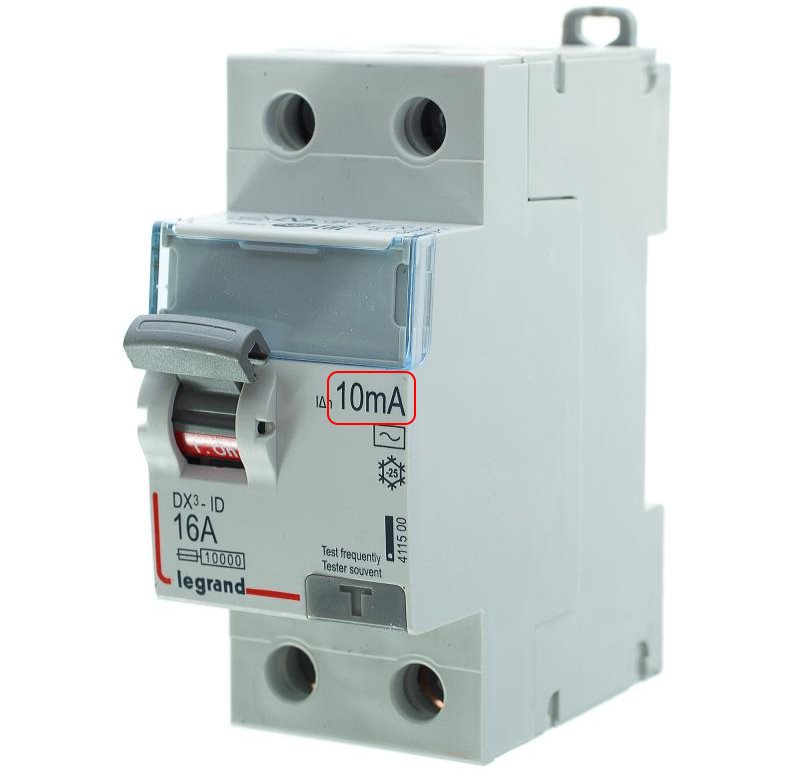
Leakage current is always indicated on the device
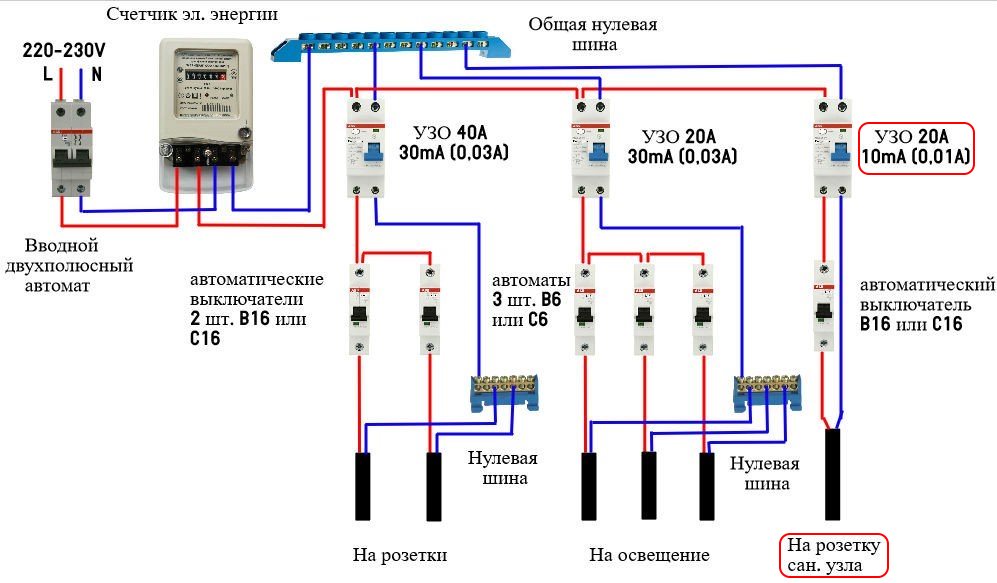
RCD connection diagram in a single-phase network with grounding
The device is connected to the network outside the bathroom, usually located in the main electrical panel of the apartment. For the system to work properly, use a special cable with a grounding conductor. With it, potentials are aligned to a safe level. Grounding on any building fittings, iron pipelines is prohibited.
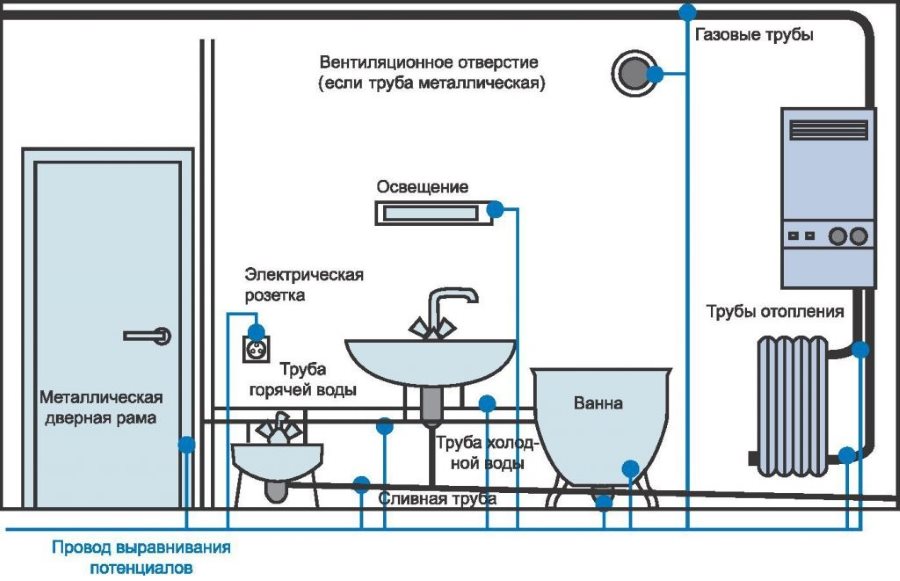
All electrical equipment is subject to earthing without fail. However, if you decide to ground your bathroom, it is advisable to consider connecting other dangerous surfaces and appliances
Conclusion
The quantity, the exact installation diagram depends on what and how much it is planned to connect to the mains.In many cases, inside the bathroom, sockets are unacceptable and you have to make them on the back of the wall.
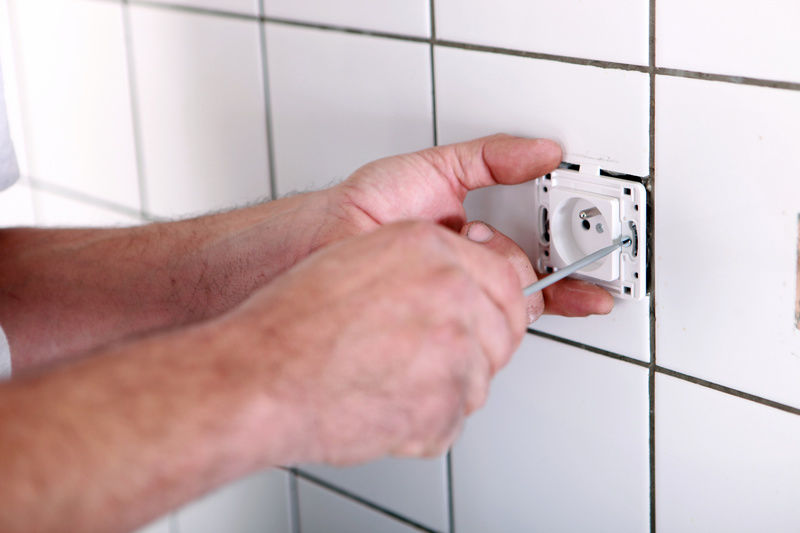
Installing outlets requires specific electrical knowledge and skills
Self-installation of elements requires special knowledge, skills, familiarization with the relevant documentation, therefore it is better to entrust such work to a professional electrician.
Video: clearly about the regulatory requirements for installing outlets in the bathroom
